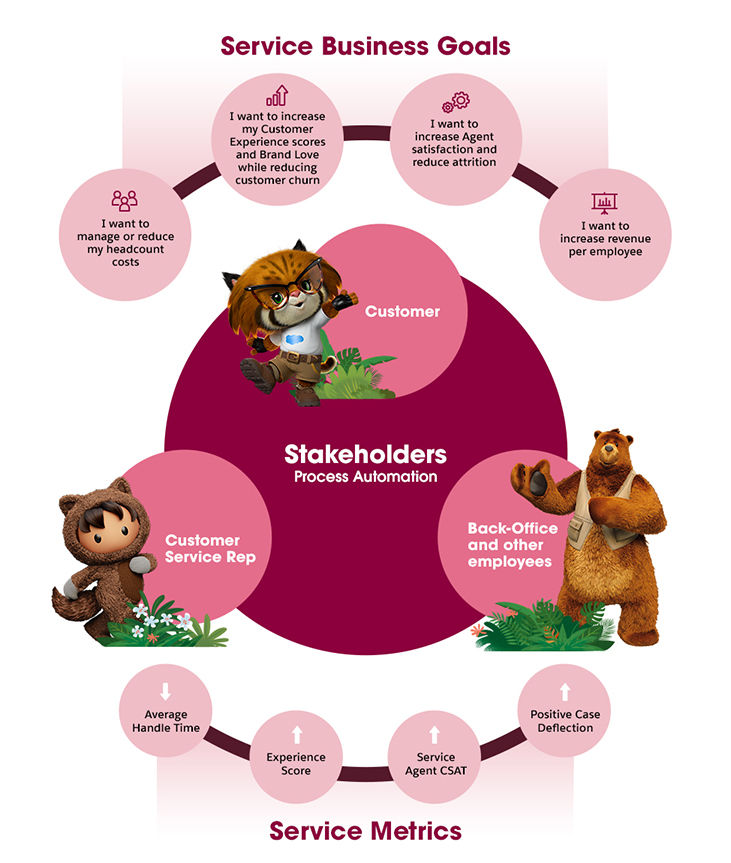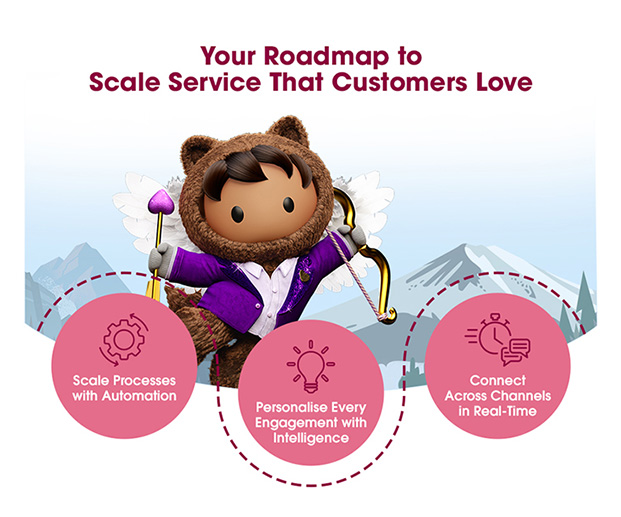As companies, we all want to deliver exceptional service experiences that delight customers. So, some of us try a new approach to service, or change a few processes. Others embark on a major digital transformation. Yet, even after all that, we don’t always achieve the ideal level of service that’s scalable and loved by customers.
Perhaps it’s time to look at things differently – to get back the basics, and ask ourselves one simple question.
Who’s responsible for service?
If your answer is “the customer service team,” you’d be right – but only partially. The truth is that everyone in the organisation needs to be working together to deliver memorable service experiences.
Let’s say a customer calls their bank’s service centre to register a credit card complaint. When they visit the bank branch the next day, the staff should already be aware of the service issue, so that they can proactively update the customer on the ticket status, explain how quickly it will be resolved, and perhaps even offer an alternative credit card.
Similarly, sales teams talking to a customer should proactively mould their pitches if the customer already has an open service ticket. Or, if the customer is browsing a website and doesn’t know which product is right for them, a chatbot should pop up to provide assistance.
There are many more such examples that demonstrate how service can be embedded at every level of the organisation. The goal is to ensure that customers enjoy a connected and seamless experience across touchpoints. That’s the hallmark of great service.
Now that we know that customer service is everyone’s responsibility, have we designed our organisations that way? Is service embedded into every level of our enterprise?
Think of it like this. As humans, we all want to enjoy good physical health – so, some of us do intermittent fasting, while others experiment with ketogenic diets. Similarly, as organisations, we all want to deliver great customer experiences – so, we embrace automation and process improvements, but we do it in silos across various departments. To truly satisfy customer needs, all our teams have to work together as a collective.
What does it take to build a customer-centric culture where service is part of everyone’s job?
Exceptional customer service is built on three pillars – the customer, the service rep, and other supporting teams. When they’re all connected through streamlined and automated processes, and when they’re united around common goals and metrics, the result is a truly customer-centric service culture.

Here are three key steps to delivering great service,and unlocking customer loyalty:

1. Scale processes with automation
For service to scale, automation has to be all-pervasive. Both business and IT users need to work together to ensure that people-to-people and system-to-system processes within service are automated. That includes legacy systems which aren’t open for API-based integrations.
Automation is that real revenue driver. It changes the boardroom conversation from “How are we going to scale service – look at what we’re spending!” to “Look at what we’ve saved by deflecting cases to chatbots, minimising escalations, and using our reps more efficiently”.
Salesforce Service Cloud has over 700 out-of-the-box automation and chatbot solutions that are tailored to your industry, enabling you to:
- Automatically route cases to the right teams, and collaborate in real-time
- Enable intelligent swarming
- Turn complicated processes into simple workflows
- Offer customers intuitive self-service experiences via web and mobile
- Empower teams to do more with less
- Integrate legacy tools without API connectors into the automation ecosystem through screen-scraping technologies like MuleSoft RPA
2. Personalise every engagement with intelligence
Seventy-three percent of customers expect companies to understand their unique needs and expectations – up from 66% in 2020.
The more you personalise service – whether that’s by anticipating a customer’s needs, or offering them curated self-help articles based on their service history – the more satisfied your customers will be. And when your processes are streamlined, then everyone across touchpoints will speak the same language to the customer.
The key to personalised service is contextual customer intelligence. Data Cloud puts all your customer data to work, so you can personalise support experiences at scale. Let’s say a customer adds a product to their shopping cart on your website, and then calls your support centre. Data Cloud will make sure the customer gets routed to the right agent with expertise on that particular product.
Service interactions powered by Data Cloud are real-time, automated, and intelligent – which leads to better customer experiences, faster issue resolution, and real savings.
3. Connect across channels in real time
While many customers still prefer traditional service channels like phone and email, a growing number want to be met on newer digital channels like online chat, mobile apps, and social media. That doesn’t mean you have to be on every single channel – just the ones your customers prefer.
But whether you engage on two channels or ten, make sure they’re all connected. So, even if a customer begins an interaction with you on WhatsApp, then continues it with a live chat agent, they never sense a gap in service.
Service Cloud makes it easy to deliver smooth omni-channel experiences by uniting all your engagement channels on one platform. Every conversation with the customer picks up seamlessly from where the last one left off.
All your teams get a complete customer view across touchpoints – so, they can deliver contextual and meaningful service. What’s more, every case and task can be managed through one platform for faster support resolutions. Expensive support calls are automatically shifted to lower-cost AI-powered chat, messaging channels, and self-service portals – thus saving valuable resources.
To sum up, the best kind of service is omni-channel, personalised, automated – and most importantly, it is everyone’s responsibility. Let’s look at how one of our customers made service a truly cross-functional and collaborative effort.
Rupeek: Achieving the gold standard in customer service
Rupeek, one of India’s leading gold loan service providers, has found a way to offer customers a seamless post-disbursal experience on Service Cloud.
All post-disbursal teams are united on one platform to coordinate customer requests with ease. This includes support teams that log and manage customer requests, back-office teams which track loan payments, and field operations teams which work with banks to release and return the customer’s gold.
Customers can raise a service query through a self-service app, the call centre, emails, or a chat feature. Data from these channels flows directly into Salesforce, giving teams a consolidated customer view to enable omni-channel service.
“We’ve made Salesforce our stakeholder experience platform – the foundation on which our customers, employees, and business can thrive,” says Rupeek Founder and CEO, Sumit Maniyar.
Make customer service a culture rather than just another function in your organisation












